
The Importance of Movement in Speech Therapy (& How to Use It)

Movement gets the blood pumping throughout the entire body, which includes a rush of blood flow to the brain. That increase in oxygen and energy maximizes brain performance, which leads directly to improved mood, attention, and a better ability to remember what they’ve learned.
Former teacher and current member of the Society for Neuroscience and New York Academy of Sciences Eric Jensen said, “Simple biology supports the obvious link between movement and learning.” In his book, he explains that increased movement grows cortical mass, a greater number of neuron connections, and gene expression to improve learning and memory (Jensen, 2005).
A study committee at the Institute of Medicine (IOM) reported sound evidence on a relationship between physical activity and brain function. They reported, “Children who are more active show greater attention, have faster cognitive processing speed, and perform better” (Kohl, 2013).
Sensory and movement activities help the brain focus, self-regulate, reduce distractions, and build neural connections to learn and retain information. Movement in therapy encourages the child to fully engage with you and enjoy learning!
If possible, incorporate speech and language targets during movement activities or participate before seated work tasks. This will help their ability to attend to the task for a longer period of time and engage them more.
I’ve noticed that if a child has been involved with movement before their speech therapy session (for example, they have just finished their occupational therapy session prior) they are more engaged and vocal.
TYPES OF MOVEMENT ACTIVITIES:
- Gross motor
- Fine motor
- Oral motor
- Balance
- Hand-eye coordination
- Cross-lateral movements
TRY SOME OF MY FAVORITE STRATEGIES:
SCOOTER BOARD
Have the child sit or lay belly down on a scooter board. Place drill or task cards along a route and have them stop along the way, pick it up, and complete the task before continuing on. You can also place objects at one end of the room, and have the child sort them into containers at the other end of the room. Another idea is to lay out a “track” of tape on the floor and have them follow it, or create an obstacle course of chairs and cones that they need to scoot around.
WEIGHTED VEST
Weighted vests provide deep pressure which is calming and helps increase focus, attention, and the ability to self-regulate. You can incorporate a weighted vest for seated tasks or during movement. A study published in the American Journal of Occupational Therapy by Nancy L. VandenBerg found that on-task behavior increased by 18-25% when a weighted vest was worn for tabletop tasks. One idea is to incorporate a weighted vest while going upstairs and completing tasks along the steps or taped on the wall.
OBSTACLE COURSE
Use a sensory tunnel, chairs to climb under, or colored spots for jumping over. I recommend using the obstacle course before seatwork. It’s easy to incorporate various activities and tasks in the beginning, middle, and end of an obstacle course to work on targeted goals.
EXERCISE BALL
This is a great inexpensive option if you don’t have a lot of space. Have the child sit on the ball and hold them at the waist while bouncing them on the ball. This is a great way to maintain their attention, work on turn-taking, eye contact, requesting, and joint attention. Work on sound imitation, filling in parts of songs, and more.
TRAMPOLINE
Have the child jump with you and sing a song, pause and stop jumping for them to fill in the blank. Use a crash pad on the trampoline to engage their body and have them fall. This is also a fun reinforcement for children, especially those working on basic communication and eye contact or requesting. Use chalk on the trampoline to work on following directions or to write out speech sounds. The goal is to have a specific task and to not let the child jump out of control.

SWINGS (platform, sensory swing)
Encourage the child to communicate by waiting for signals such as telling you they want up on the swing or wiggling their body to indicate they want you to push them. Push them a few times, then stop the swing to wait for them to communicate again. You can also use the swing as a reward for completing a task. Swings have a calming effect on those who struggle with organizing sensory input, for example, those with sensory processing disorder. Therefore swinging helps calm over-stimulated senses, allowing a child to attend better to a task and be more available to learn.
BALL PIT
The ball pit is perfect for hiding items, such as your speech cards. You can also have them practice their labels by searching for, naming or categorizing other items hidden in the pit.
SENSORY TABLE/BIN
Use a rice table like you would a ball pit; they can find speech cards or other hidden items. This is an effective calming activity that keeps hands engaged and busy. Read more ideas on incorporating sensory bins in therapy here.
SLIDES
Slides are a fun and motivating movement. The slide can be used as a reward for completing the desired task. Talk about the actions – “up up up, down!” or “ready, set…” “go!” or incorporate a drill activity such as putting articulation cards leading up to the slide or at the bottom of the slide.
Download this graphic for free!
Do you have your own favorite ways to incorporate movement in speech therapy? Let me know in the comments!
Jensen, E. (2005). Teaching with the brain in mind. (2nd edition). Alexandria, VA: Association for Supervision and Curriculum Development.
Kohl, HW, and HD Cook. “Educating the Student Body: Taking Physical Activity and Physical Education to School.” The National Academies, 2013, doi:10.17226/18314.
If you enjoyed this post, please share it!
Follow my blog with Bloglovin
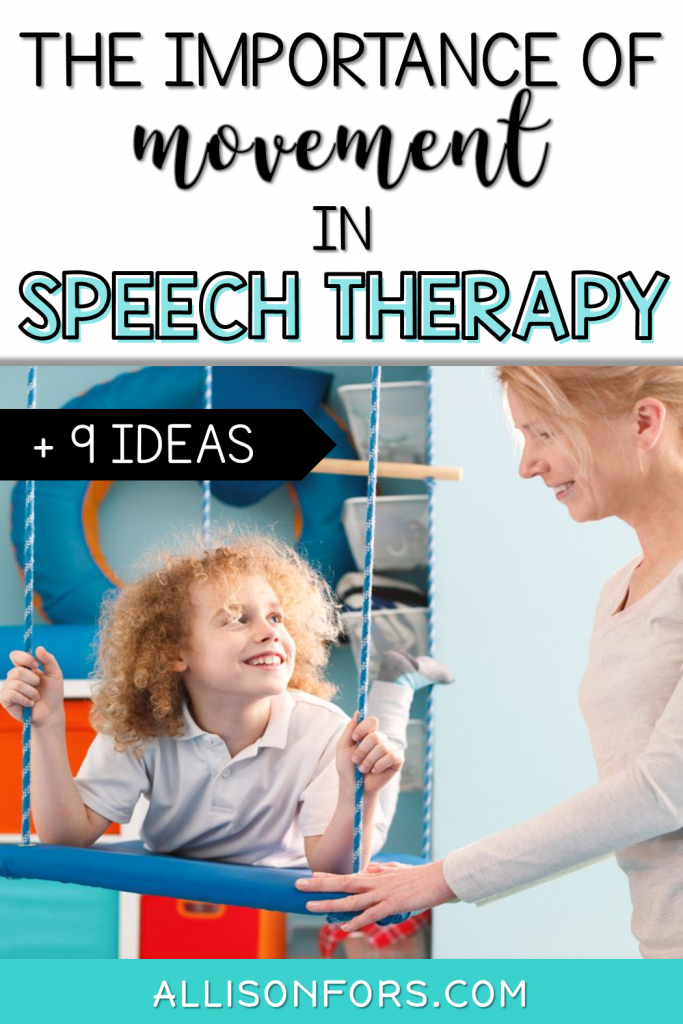

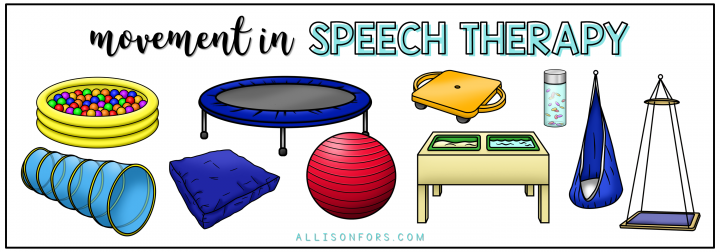
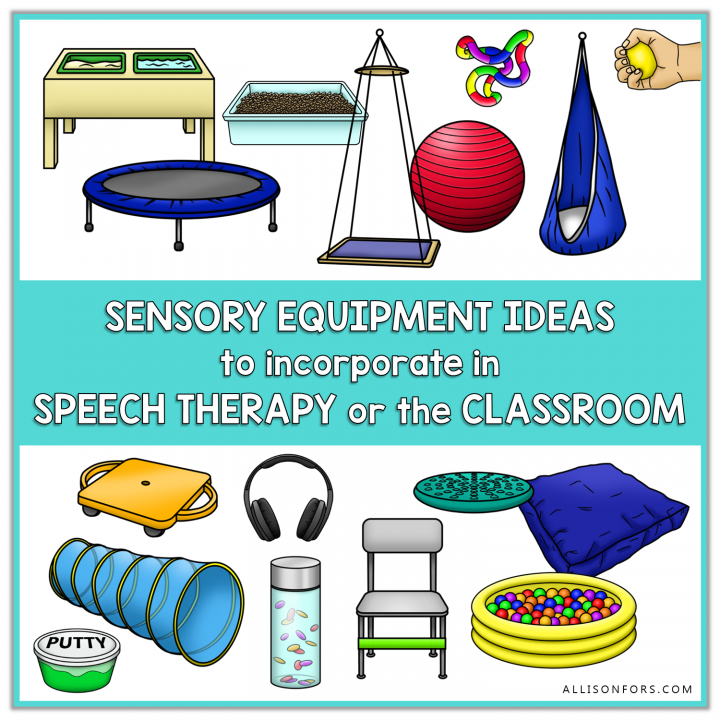


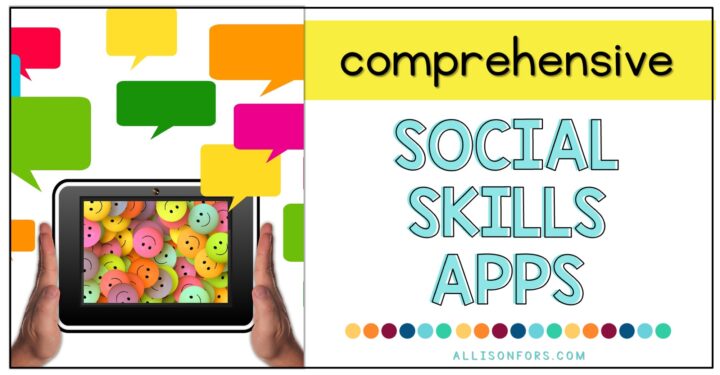
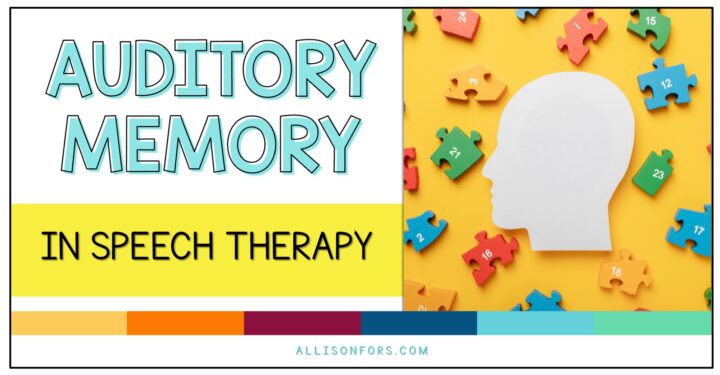


One Response
It was interesting when you said that incorporating movement into the therapy will help the child engage better. My son has been having trouble with his speech and occupational skills and might need pediatric therapy. Your article helped me feel prepared to talk with pediatric therapy services about their practices.